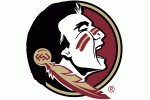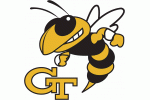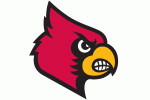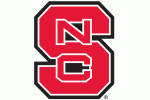The 30-second clock hasn't been kind to Syracuse.
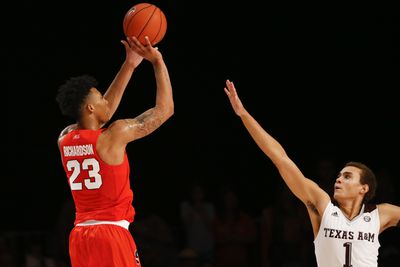 In November, Syracuse coach Jim Boeheim told the Associated Press he didn't think the NCAA's decision to shorten the shot clock in men's college basketball would "have any effect at all."
In November, Syracuse coach Jim Boeheim told the Associated Press he didn't think the NCAA's decision to shorten the shot clock in men's college basketball would "have any effect at all."
"Most teams shoot between 12 and 16 seconds," he said. "... I think if you went to 24, there would be a noticeable effect, but not 30."
Boeheim's rationale wasn't necessarily misguided. According to Kenpom, SU's average offensive possession lasted 16.5 seconds in 2014-15. Meanwhile, the slowest-paced team in the ACC and one of the slowest in the country — Virginia — still only took 21.1 seconds to get a shot off on an average possession.
Twelve games into the 2015-16 season, though, the new shot clock has had a pretty sizable effect on the Orange — and for the worse. In the last five seconds of the shot clock, Syracuse is effectively shooting 36.4% from the field, down from 43.8% a season ago, according to Hoop-Math. Making matters worse, 19.8% of SU's non-transition shots have occurred within the last five seconds of the shot clock, compared to just 8.1% in 2014-15.
In fact, Syracuse has attempted 103 shots in the last five seconds of the shot clock this season, only 10 fewer than it took in 31 games last season.
That's a trend that has followed most teams this season, although it hasn't always been as significant as it has in Syracuse's case. In the ACC, 13 of 15 teams are taking a higher percentage of shots within the last five seconds of the shot clock than they did last season.
However, those teams haven't all been negatively affected by the new rule, as shown in the table below. Nine of the 15 teams have actually seen their effective field goal percentage improve in the last five seconds of the shot clock, indicating that the new clock hasn't made it more difficult to score across the board.
| Team | eFG% in last 5 seconds of shot clock, 2014-15 | Percentage of non-transition shots occurring in last five seconds of shot clock, 2014-15 | eFG% in last 5 seconds of shot clock, 2015-16 | Percentage of non-transition shots occurring in last five seconds of shot clock, 2015-16 |
| Syracuse | 43.8% | 8.1% | 36.4% (-7.4%) | 19.8% (+11.7%) |
| Boston College | 44.2% | 14.9% | 51.6% (+7.4%) | 19.4% (+4.5%) |
| Clemson | 44.2% | 14.1% | 42.9% (-1.3%) | 18.8% (+4.7%) |
| Duke | 59.8% | 13.7% | 61.8% (+2.0%) | 13.1% (-0.6%) |
| Florida State | 44.9% | 12.2% | 30.6% (-14.3%) | 19.0% (+6.8%) |
| Georgia Tech | 30.5% | 14.5% | 33.0% (+2.5%) | 16.5% (+2.0%) |
| Louisville | 45.3% | 11.9% | 45.4% (+0.1%) | 9.5% (-2.4%) |
| Miami | 44.8% | 14.2% | 48.3% (+3.5%) | 17.8% (+3.6%) |
| North Carolina | 41.5% | 5.2% | 39.1% (-2.4%) | 8.3% (+3.1%) |
| NC State | 43.4% | 14.1% | 42.3% (-1.1%) | 19.8% (+5.7%) |
| Notre Dame | 50.2% | 16.3% | 55.2% (+5.0%) | 26.0% (+9.7%) |
| Pittsburgh | 42.3% | 16.7% | 46.5% (+4.2%) | 16.8% (+0.1%) |
| Virginia | 43.8% | 13.7% | 53.1% (+9.3%) | 20.9% (+7.2%) |
| Virginia Tech | 47.0% | 14.1% | 45.9% (-1.1%) | 15.5% (+1.4%) |
| Wake Forest | 38.9% | 7.9% | 57.3% (+18.4%) | 12.0% (+4.1%) |
In Syracuse's case, there are ways, at least theoretically, to fix the problems the shortened clock has caused. For starters, the Orange might want to do what they can to ensure that Trevor Cooney and Malachi Richardson don't possess the ball late in the clock.
Cooney and Richardson, who haven't had much success this season at creating their own shots, are leading SU with 26 and 21 shots, respectively, in the last five seconds of the shot clock. Cooney is effectively shooting a dismal 36.5% in those scenarios, while Richardson has been even worse, effectively shooting 23.8%.
As obvious as it sounds, Michael Gbinije — who has been the Orange's best player by a wide margin this season — should have the ball in his hands with the shot clock winding down. He's effectively shooting 60.5% on 19 shots taken in the last five seconds of the clock, by far the best mark on the team.
Of course, that would likely lead to defenses paying even more attention to Gbinije, making it difficult for him to keep up that prolific pace. But as he proved against Colgate, Gbinije is capable of being an adept passer out of double teams. And when he's passing out of double teams, it means someone else is open, which would likely result in better statistics late in the shot clock for Cooney, Richardson and others.
In any scenario, Syracuse would be wise to find some solution to its late offense troubles if it hopes to have success in ACC play. The Orange rank 14th in the conference in offensive rating and 11th in Kenpom's adjusted offensive efficiency rating. On that end of the court, they'll need to get better if they expect to keep up.






